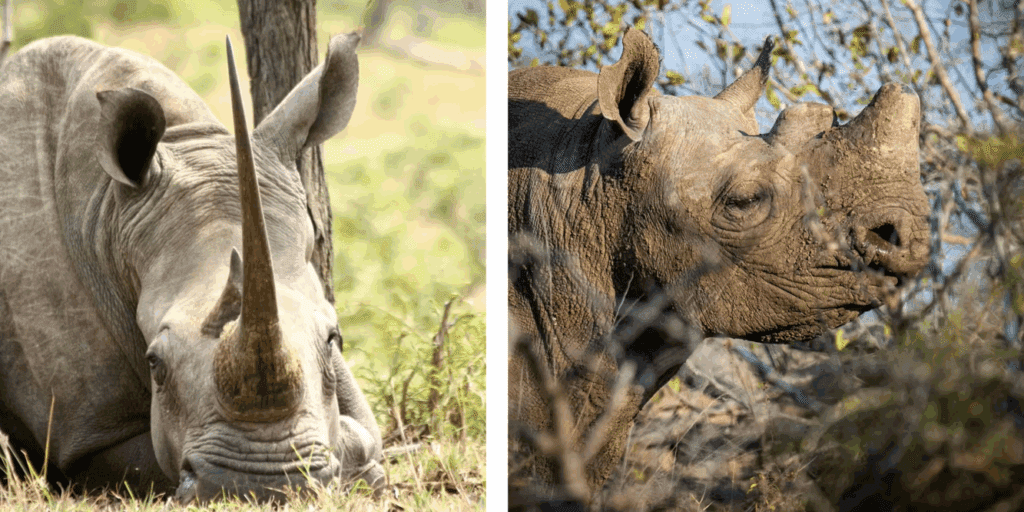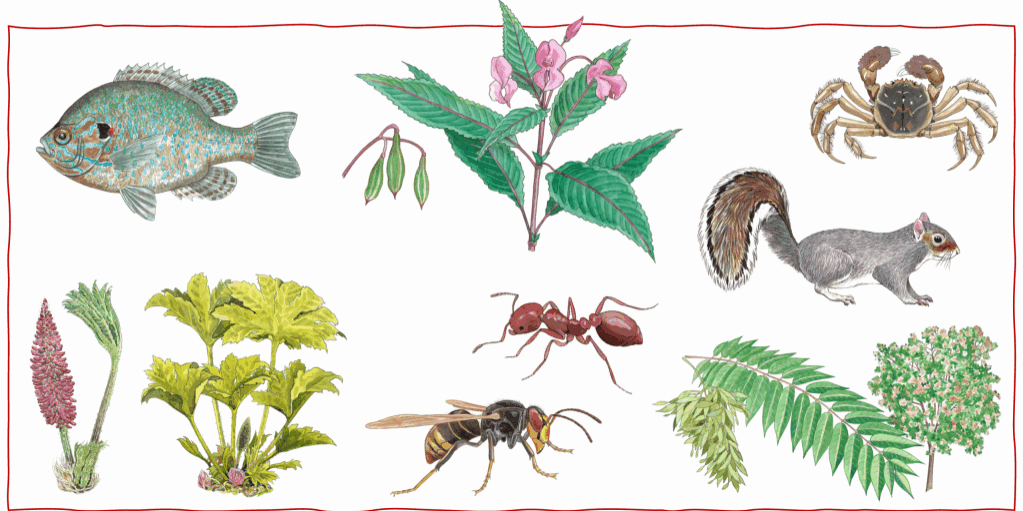A brand new synopsis for reptile conservation
Will Morgan is a Postdoctoral Research Associate with the Conservation Evidence team, and Rebecca Smith is a Senior Research Associate and Conservation Evidence Manager.

As we begin a brand new year, we are delighted to announce that the long awaited Reptile Conservation synopsis of evidence is finally here, produced by an international team of authors and advisors.
But what actually is a “Reptile Conservation synopsis of evidence”?
Let’s start with the “reptile” part of that question and travel back in time over 300 million years. By then, many vertebrates had left the world’s oceans to colonise the land, but for tens of millions of years those early pioneers still relied on aquatic habitats for laying their eggs. It was around this time that the earliest reptiles and synapsids (mammal-like reptiles) began to appear in the fossil record, and due to the evolution of an additional membrane that surrounded the embryo during development, these species were able to abandon the water completely and become the first fully terrestrial vertebrates (Dowling & Zug 2021). These early reptiles were small, lizard-like creatures that likely lived within the forested habitats that were abundant during the Carboniferous period.
Jumping forward around 50–60 million years, we arrive at the start of the Mesozoic era: the ‘Age of Reptiles’. It was during the Triassic period (250–200 million years ago) that some groups of species were appearing that would give rise to modern day reptiles. One of these groups was the Lepidosauromorphs, whose modern day descendants are lizards, snakes, amphisbaenians and tuatara (arguably the loneliest reptile still living today). This was followed by the appearance of Archosauromorphs, which include crocodilians, as well as dinosaurs and modern day birds.

But what of turtles and tortoises? Well here the story is a little more complicated. Modern day turtles were once thought to belong to an ancient lineage of reptiles known as anapsids, or parareptiles (as opposed to Eureptilia, or “true” reptiles). While more recent research suggests this may not be the case (DeBragga & Riippel 1997), there is still some debate as to whether turtles are more closely related to the crocodilians and the Archosaurs, or to lizards, snakes and the other Lepidosaurs (Lee 2013; Schoch & Sues 2015).
What is clear, is that modern day reptiles have a rich and complex evolutionary history: after pioneering the transition to fully terrestrial vertebrates they re-colonised the world’s oceans as ichthyosaurs and later plesiosaurs; took to the skies as the leathery winged pterosaurs; became some of the largest herbivores (the sauropods) and carnivores (see Spinosaurus and Tyrannosaurus!) to walk the earth; and survived three mass extinction events.
Today, there are 11,500 known species of reptiles living on planet Earth, and hundreds more are being described each year (Uetz & Hosek 2021); making reptiles more diverse than amphibians (around 8,400 species) and mammals (around 6,600 species), and possibly even more diverse than birds (around 11,200 species. But we’ll leave the “aren’t birds just a sub-group of reptiles?” debate for another day!) (IUCN 2021). Interestingly, there is considerable imbalance in the number of reptile species belonging to different groups (Pincheira-Donoso et al. 2013). While the combined number of species of turtles, crocodilians and tuatara does not reach 400, the number of snake, lizard and amphisbaenian species is in excess of 11,000 (Uetz & Hosek 2021).
But, once again in their long history, many reptile species are facing the threat of extinction. According to the IUCN Red List, of 10,148 reptile species that have been assessed, between 18-33% are considered to be threatened (IUCN 2021). Extinction risks are particularly high in tropical regions, on oceanic islands and in freshwater environments (Böhm et al. 2013), with some 59% of turtle species assessed at risk of extinction (van Dijk et al. 2014). Habitat loss and fragmentation, over-exploitation, pollution and climate change all pose significant threats to reptile populations, and many species will require considerable conservation effort in order to safe-guard their futures (Fitzgerald et al. 2018). But what might those conservation efforts look like? And how might ineffective and even harmful efforts be avoided?

This brings us neatly on to the second part of our question: what is a synopsis of evidence, and how can it help?
The aim of a synopsis of evidence is to gather together available evidence for all of the possible actions you could carry out to conserve a given species group or habitat: in this case, reptiles. Actions include anything from captive breeding and head-starting, to changing livestock grazing regimes and adding woody debris to the landscape; and from relocating eggs to hatcheries and translocating problem reptiles, to the use of education and awareness raising programs. For every action, we gather together all of the scientific evidence that can be found; describe each piece of evidence in an easy to digest summary paragraph; and further condense the evidence into a set of key messages. And the best part? It’s all freely available on our website as part of a searchable database and to download as a PDF.
For this synopsis alone, nearly 300 journals and eight report series were searched, which amounted to around 700,000 articles! Just over 700 articles were found that tested the effect of a conservation action on reptiles, and the synopsis includes 1,003 summary paragraphs. These summaries describe tests of 195 actions, with a further 117 actions included in the synopsis but for which we found no evidence. Once the evidence has been assessed by a panel of experts, an effectiveness category will also be provided for each action in our annual What Works in Conservation.
Our hope is that this synopsis will be a valuable resource for anyone that is considering carrying out any action for the conservation of reptiles; whether that be decisions relating to vegetation management in a small nature reserve, or developing national level policy for the protection of endangered reptile species. Searching for an action or species of interest and seeing what evidence is available takes just minutes!

The synopsis also highlights that we need more people testing conservation actions and publishing their results to share with the community, to ensure cost-effective action (e.g. see https://conservationevidencejournal.com/). Many widely used conservation actions – such as coppicing woodland or erecting exclusion fences during construction works – remain largely untested for reptiles. With a new year just getting underway, maybe now is the perfect time to start testing actions to help ensure the successful conservation of these creeping, crawling, gliding, diving, slithering, swimming species!
References
Böhm M., Collen B., Baillie J.E.M., Bowles P., Chanson J., Cox N., Hammerson G., Hoffmann M., Livingstone S.R., Ram M., Rhodin A. et al. (2013) The conservation status of the world’s reptiles. Biological Conservation, 157, 372–385.
DeBraga M. & Rieppel O. (1997) Reptile phylogeny and the interrelationships of turtles. Zoological Journal of the Linnean Society, 120, 281–354.
Dowling H.G. & Zug G.R. (2021) Reptiles. Available at https://www.britannica.com/animal/reptile. Accessed 7 January 2022.
Fitzgerald L.A., Walkup D., Chyn K., Buchholtz E., Angeli N. & Parker M. (2018) The future for reptiles: advances and challenges in the Anthropocene. Encyclopedia of the Anthropocene, 3, 163–174.
IUCN (2021) IUCN red list of threatened species. Version 2021-1. Available at https://www.iucnredlist.org/resources/summary-statistics#Summary%20Tables. Accessed 7 January 2022.
Lee M.S.Y. (2013) Turtle origins: insights from phylogenetic retrofitting and molecular scaffolds. Journal of Evolutionary Biology, 26, 2729–2738.
Pincheira-Donoso D., Bauer A.M., Meiri S. & Uetz P. (2013) Global taxonomic diversity of living reptiles. PloS one, 8, e59741.
Schoch R.R. & Sues H.D. (2015) A Middle Triassic stem-turtle and the evolution of the turtle body plan. Nature, 523, 584–587.
Uetz P. & Hosek J. (2021) The Reptile Database. Available at http://www.reptile-database.org. Accessed 6 January 2022.
van Dijk P.P., Iverson J.B., Rhodin A.G.J., Shaffer H.B. & Bour R. (2014) Turtles of the world, 7th edition: annotated checklist of taxonomy, synonymy, distribution with maps, and conservation status. Pages 329–479 in: A.G.J. Rhodin, P.C.H. Pritchard, P.P. van Dijk, R.A. Saumure, K.A. Buhlmann, J.B. Iverson & R.A. Mittermeier (eds.) Conservation Biology of Freshwater Turtles and Tortoises: A Compilation Project of the IUCN/SSC Tortoise and Freshwater Turtle Specialist Group. Chelonian Research Monographs, 5.



